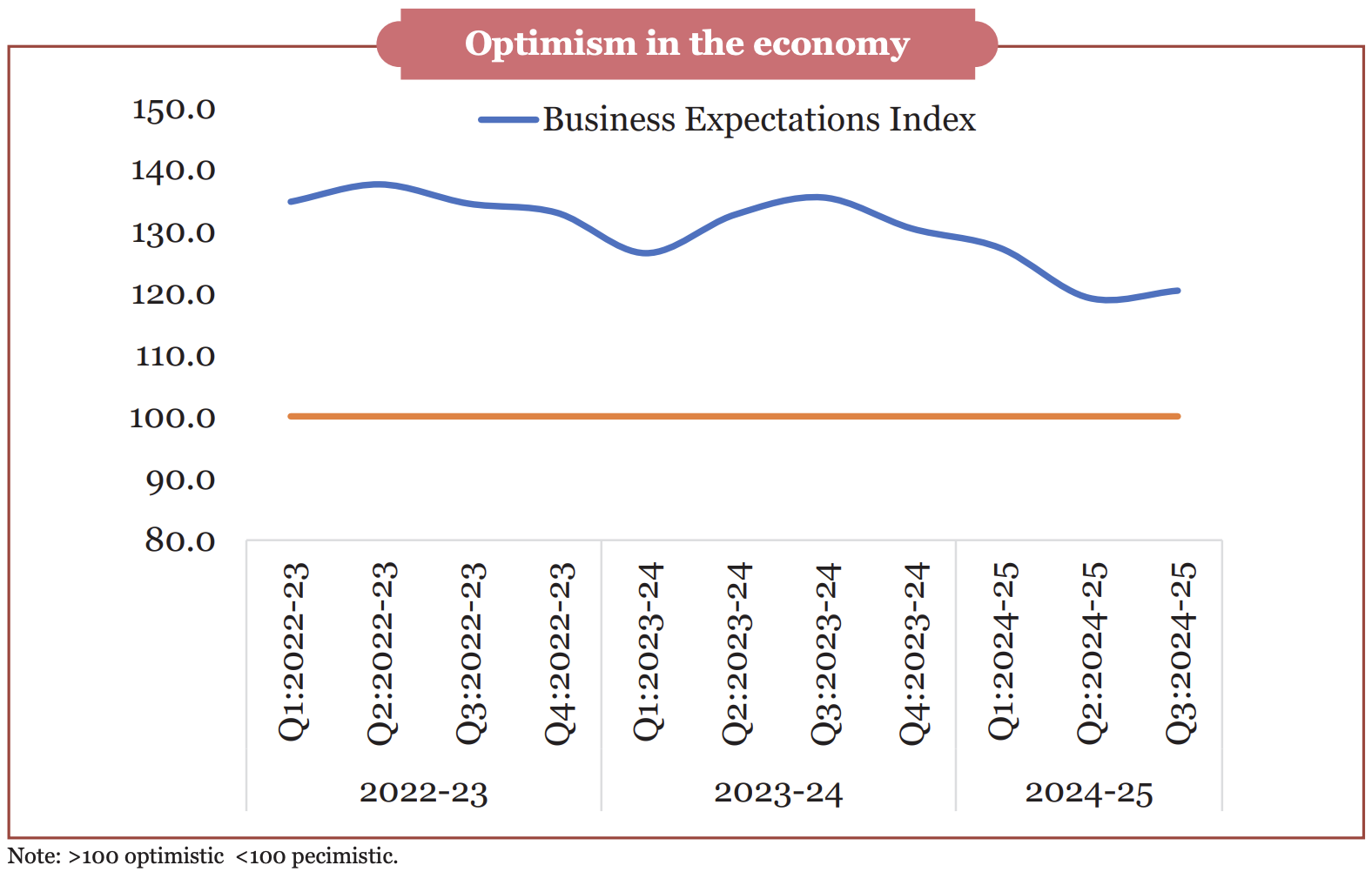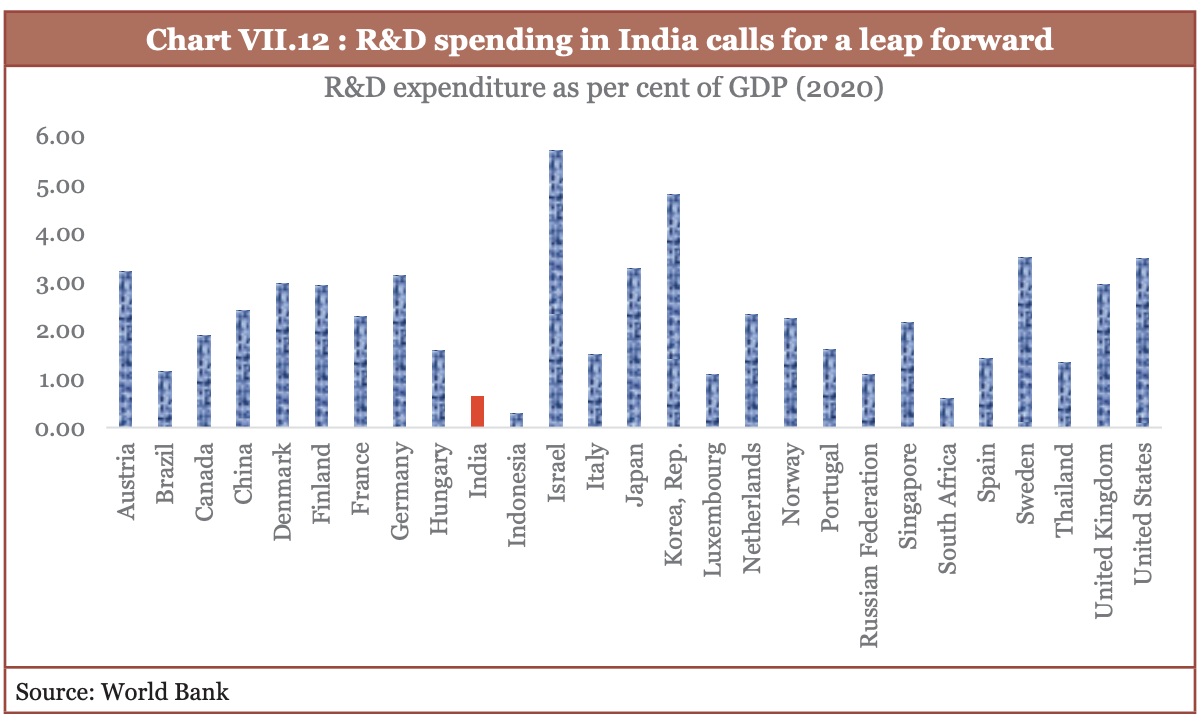Introduction
- The manufacturing sector is expected to grow by 6.2% in FY25, driven by electricity and construction.
- India holds 2.8% of the global manufacturing share, compared to China's 28.8%, offering significant growth potential.

Core Input Industries
- Cement: India is the second-largest cement producer globally, with per capita consumption of 290 kg, compared to the global average of 540 kg.
- Steel: Steel demand is driven by growth in end-user sectors and policies like the National Steel Policy and PLI schemes. The Steel Scrap Recycling Policy promotes efficient recycling, and securing high-quality scrap is vital for transitioning to green steel.
- Chemical and Petrochemical Industries: India is a net importer, relying on imports for about 45% of petrochemical intermediates.
- Capital Goods: Due to technology gaps, this sector imports advanced machines for manufacturing.
- The government is promoting Smart Manufacturing and Industry 4.0, supporting the creation of Smart Advanced Manufacturing and Rapid Transformation Hub (SAMARTH) Udyog centers at various institutions.
- Automobile Industries: The Indian automobile industry drives economic growth, with domestic sales rising by 12.5% in FY24. Recognizing its potential, the government has extended the PLI Scheme for another year.

- Electronics: India now manufactures 99% of its smartphones, reducing import dependence.
- Programs like Make in India and Digital India, along with better infrastructure, have boosted production and attracted foreign investments.
- However, India's electronics market makes up just 4% of the global share, mainly focused on assembling, with limited progress in design and components.
- Textiles: The textile industry is a major employer, contributing 11% to India's manufacturing GVA. India is a top producer of jute and ranks second globally in cotton, silk, and man-made fibre. It is the sixth-largest exporter of textiles, with a 4% share of global trade. Technical textiles, with India ranking fifth globally, offer significant growth potential.
- Challenges: MSME dominance limits scale and efficiency, fragmentation increases logistics costs, reliance on cotton limits competitiveness, limited foreign direct investment, lack of technological advancement, dependence on imported machinery, significant skill gap hindering productivity and innovation.
- Pharmaceuticals: India's pharmaceutical industry, the third-largest globally by volume, has been growing at 10.1% annually over the last five years.
- Government initiatives like the PLI scheme and Strengthening of Pharmaceuticals Industry (SPI) aim to boost self-reliance and reduce dependence on imports.
- India is making progress in cell and gene therapy, with the approval of its first indigenously developed CAR-T cell therapy . To speed up access to new drugs, the Central Drugs Standard Control Organisation now allows waivers for local clinical trials for drugs approved in the USA, UK, Japan, Australia, Canada, and the EU.
- Micro Small And Medium Enterprises (MSME): This sector is vital to India's economy, creating jobs with low capital costs.
- Key interventions: Self-Reliant India Fund , MSME-Cluster Development Programme ,Credit Guarantee Scheme to improve credit access, Micro and Small Enterprises Facilitation Council to resolve delayed payments, MSME Samadhan and CHAMPIONS portals to address MSMEs' issues.
State-Wise Patterns In Industrial Production
- Gujarat, Maharashtra, Karnataka, and Tamil Nadu together account for 43% of India's industrial value, while the northeastern states contribute just 0.7%.
Conclusion
To achieve its goal of becoming a manufacturing powerhouse, India needs coordinated efforts from all levels of government, the private sector, skill development systems, academia, research institutions, and financial stakeholders.
One Line Summary India's industrial sector is expanding rapidly through PLI schemes, ease of doing business reforms, and MSME support, but global trade challenges, high logistics costs, and skilling gaps require further policy action |
Relevance for UPSC
|


